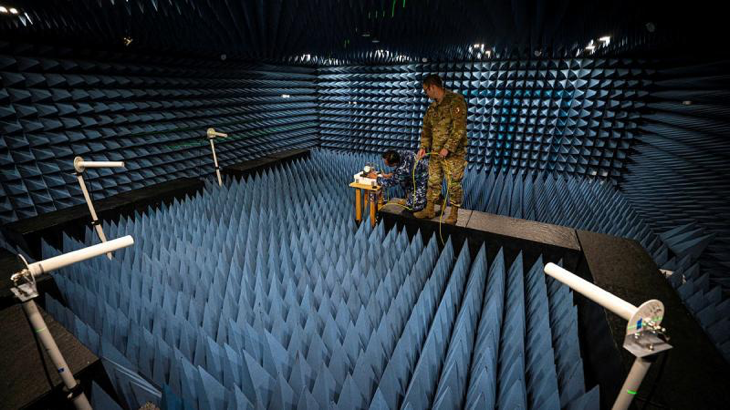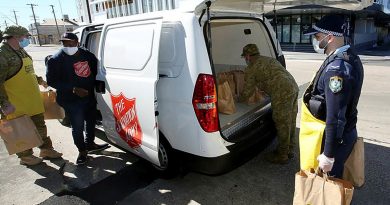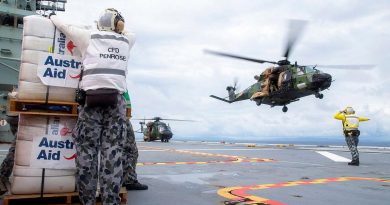Testing on track to improve GPS

In an unassuming corrugated building in New Mexico sits a state-of-the-art facility where Australian and US Defence personnel have teamed up to test the resilience of Global Positioning System (GPS) devices commonly used by the military in increasingly hostile and electronically jammed environments.
CAPTION: Personnel from the Australian Joint Positioning, Navigation and Timing Directorate, Joint Capabilities Group and Joint Navigation Warfare Centre align GPS test equipment at Kirtland Air Force Base, New Mexico. Story by Squadron Leader James Pak and Ricky Bryan. Photos by Senior Airman Spencer Kanar, USAF.
They were testing the AN/PSN-13A Defense Advanced GPS Receiver (DAGR), a small but capable device about the size of a fist. The DAGR is used in Bushmasters, tanks and Navy vessels, among many other applications.
GPS-enabled systems are commonplace for navigation and nanosecond-accurate timing critical to mission system functioning.
Australian test director Flight Lieutenant Paul Wilkinson, of Joint Capability Group’s recently established Joint Positioning, Navigation and Timing (PNT) Directorate (JPD), said people would be surprised at the number of platforms in the ADF that have a DAGR.
“That’s the reason why we are keen to test this receiver as a priority,” he said.
Members of the JPD recently teamed with the US Space Command’s Joint Navigation Warfare Center to put the DAGR through its paces.
The combined team also tested a number of Controlled Reception Pattern Antennas. Functioning similar to noise-cancelling headphones for GPS, these antennae can detect abnormal signals from a potential jammer and ignore them, allowing the connected receiver to focus on the legitimate signals transmitted from GPS satellites.
“In the broader national security context, PNT sources such as GPS are critical to the efficient flow of the commercial transport sector and the day-to-day running of national critical infrastructure,” Flight Lieutenant Wilkinson said.
“But as GPS reliance has become more proliferated in military and civil use, so too have threats and attacks. The current conflicts in Ukraine and Israel have seen the most widespread use of GPS jamming to date.”
He said GPS resilience would be an essential requirement for the operation of long-range strike and autonomous systems articulated in the National Defence Strategy.
Data obtained from the test, which will inform future decision-making on the battlefield, will be shared to enhance collective allied resiliency.
.
.

.
.





